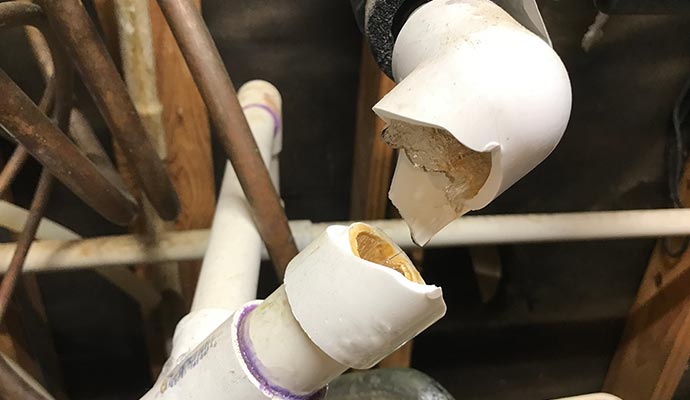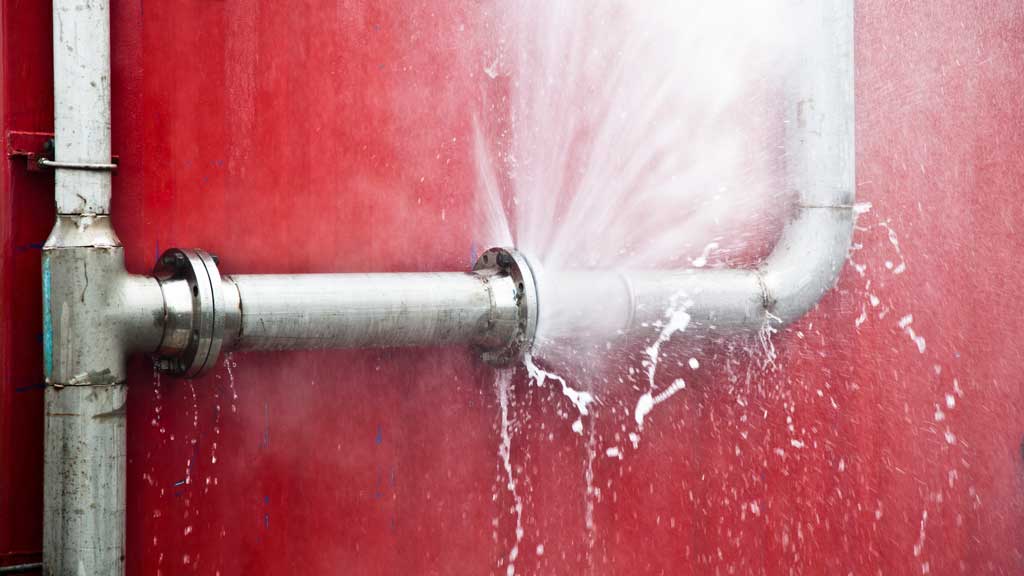Signs of a Burst Pipe: How to Identify and Address the Issue Before It Escalates
Signs of a Burst Pipe: How to Identify and Address the Issue Before It Escalates
Blog Article
Protecting Against Ruptured Pipeline: Necessary Tips to Protect Your Plumbing
Avoiding ruptured pipes is an essential worry for homeowners, especially throughout cooler months when the danger of cold is enhanced. Applying strategic actions such as proper insulation, routine assessments, and preserving constant interior temperature levels can substantially lower the likelihood of pipeline failing.
Understand Pipeline Vulnerabilities
Comprehending pipeline vulnerabilities is important for efficient plumbing upkeep and avoiding costly damage. A number of factors add to the vulnerability of pipelines to ruptureds, including material make-up, age, and environmental problems. Older pipes, particularly those made from galvanized steel or polybutylene, frequently break down in time, bring about increased danger of ruptures and leaks.
Temperature level fluctuations can likewise dramatically impact pipe honesty. In colder environments, water trapped in pipes can freeze, expanding and putting in stress on the pipe walls, which might eventually bring about a burst. High water stress can stress pipelines, specifically at joints and bends, enhancing the possibility of failing.

Insulate Water Lines Correctly
Appropriate insulation of pipelines is vital for preventing cold and succeeding bursts throughout cold weather condition (burst pipe). Shielding your plumbing system efficiently safeguards versus temperature level drops that can cause costly damage. Begin by identifying susceptible locations where pipelines are exposed to exterior temperature levels, such as basements, attics, and exterior walls
Usage foam pipeline insulation sleeves or wrap insulation tape around these locations to give a protective obstacle. Make sure that all sections of the pipes, particularly those with limited heat direct exposure, receive sufficient insulation. Pay special interest to fittings and joints, as these are more at risk to freezing.
When insulating, it's necessary to pick products that fulfill regional building ordinance and are proper for the specific setting. Fiberglass insulation is frequently advised for its thermal resistance buildings. In addition, take into consideration utilizing warmth wires or tape in extreme conditions, which can be connected in to provide extra heat
Routinely examine insulated pipelines for any indicators of wear or damages, as compromised insulation can diminish its performance. By taking these proactive steps, you dramatically minimize the risk of pipe ruptureds, ensuring a dependable pipes system throughout the cold weather.
Maintain Regular Temperature
A secure indoor temperature is vital for preventing burst pipes throughout the frigid months. When temperatures decrease, water within pipelines can ice up, developing and broadening stress that may eventually trigger the pipes to burst. To mitigate this threat, homeowners ought to keep a consistent temperature throughout their living area, preferably no reduced than 55 ° F(13 ° C)Making use browse around here of a programmable thermostat can assist handle indoor temperature levels efficiently, making certain that spaces with pipes continue to be cozy even when your home is vacant. Pay unique interest to areas that are a lot more at risk to article source cold, such as attic rooms, garages, and cellars. Maintaining closet doors open under sinks can also enable warmer air from the home to circulate around plumbing.
On top of that, it is prudent to permit faucets to drip slightly during severe chilly spells. This minor circulation of water can prevent cold by easing pressure within the pipes. Furthermore, during especially severe weather condition occasions, consider briefly suspending any type of nighttime setbacks on your thermostat to keep a steady warm atmosphere. By implementing these techniques, property owners can substantially minimize the danger of pipe ruptureds and protect their plumbing systems versus the severe winter months components.
On A Regular Basis Inspect Pipes
Regular inspections of plumbing click site systems are essential for protecting against ruptured pipes and keeping general home integrity. Regular checks allow homeowners to identify potential concerns prior to they escalate into pricey repair work or major water damage. Throughout these examinations, it is important to analyze noticeable pipelines for indicators of deterioration, leakages, or put on. Pay special interest to areas prone to freezing, such as basements, attics, and outside walls.
In addition, checking connections and joints is important, as these factors are commonly susceptible to leaks. Homeowners must likewise examine water stress degrees, as excessive pressure can stress the pipes system and raise the danger of pipeline bursts.
Think about scheduling professional pipes examinations at the very least yearly, specifically before winter, to guarantee your system is prepared for colder temperatures. Normal inspections not just help in determining prompt problems yet likewise foster long-term maintenance techniques that can boost the lifespan of your plumbing system. By being positive in your strategy, you can secure your home versus the turbulent and pricey effects of burst pipes. Prioritizing pipes examinations is an investment in your home's health and wellness.
Know Emergency Situation Procedures
Recognizing emergency situation procedures is crucial for every property owner, particularly after conducting normal pipes assessments. Being prepared for a plumbing emergency can significantly mitigate damage and conserve costs.
Next, keep crucial devices handy. A plumbing emergency package should consist of a wrench, bettor, and towels, as well as a flashlight and a pail for small leaks. Furthermore, think about having the call information for a relied on plumbing professional readily offered, must the situation escalate past your control.
If you detect a leakage or ruptured pipeline, immediately shut off the water and alert your plumbing. Record the damage with photographs for insurance coverage objectives. Understand the indications of possible plumbing problems, such as uncommon water pressure changes or damp spots on walls
Eventually, proactive expertise and quick action are crucial in handling pipes emergency situations, guaranteeing your home remains protected and minimizing possible damage.

Conclusion
Finally, stopping ruptured pipelines requires a multifaceted approach that includes understanding pipe vulnerabilities, proper insulation, preserving consistent indoor temperature levels, routine evaluations, and knowledge of emergency treatments. By applying these essential techniques, the threat of pipes failings can be significantly reduced, consequently making certain the longevity and performance of the pipes system. Aggressive steps not just safeguard against potential damages yet likewise add to general water preservation and the security of home.
In chillier climates, water trapped in pipes can freeze, putting in and broadening pressure on the pipeline wall surfaces, which might inevitably lead to a ruptured. When temperature levels decline, water within pipelines can freeze, creating and expanding pressure that may inevitably trigger the pipes to burst. By applying these techniques, home owners can considerably lower the danger of pipe bursts and protect their pipes systems against the extreme winter months components.

Report this page